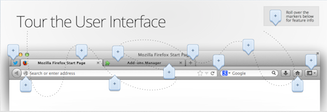I’ve been asked many times how do I safely use the internet while traveling. Here’s a summary of my notes that will significantly reduce the possibility of having your identity, credit card info or online credentials stolen. None of us are 100% vigilant and fool-proof especially during the haste and confusion of modern day travel. These are all simple suggestions that can provide you with peace-of-mind.
No free Wifi. Avoid free Wifi if at all possible, period. Being cheap can end up costing you a lot. In my humble opinion, the risks of free Wifi when you are traveling simply aren’t worth it. For more details keep reading and I also offer suggestions to protect your online presence if you have to use free Wifi.
Use 3G or 4G. Instead, I recommend you use your cellular data plan, tethering or buy a cellular hotspot. Generally speaking, 3G and 4G is more secure than Wifi because the equipment to crack it is significantly more expensive and heavily regulated. If you travel to a foreign country you can also buy phones with short term rental contracts, or if your phone uses a SIM card you buy one of those with a data plan. This may cost less and provide a greater amount of data allowance than having your existing provider activate international roaming.
Verify Wifi SSIDs. If you have to use Wifi, have hotel staff or restaurants/coffee shops write down the SSID number of their free Wifi. That way you are sure to log in to the correct network. The fastest way to get virtually compromised is to accidentally log into an increasing number of fake networks specifically designed to steal credentials. If you aren’t an expert in network security, and that’s the vast majority of us, then you may not know this happened until it’s too late.
Use a VPN. Considering using Virtual Private Network or VPN software. Most companies offer these to their business travelers. Consumers can use these as well, and an example of that is proXPN which has both free and paid options: https://www.proxpn.com. A VPN encrypts your traffic and helps to double protect user names, passwords and content. Look for VPNs that protect not just internet traffic but instant messaging and any other software you may be running such as Skype. The proXPN paid version protects all traffic on web clients and mobile devices, where the free version only protects basic internet surfing. Paid versions also typically provide better surfing speeds than free versions.
Use Tor. Check out the Tor browser for general surfing as it provides you with a decent measure of security against criminals snooping your email or online purchases. If it’s legal for the country you are in, consider installing Tor: https://www.torproject.org/. Recent versions work on Android devices, as well. And, Tor can be used along with some VPNs for even greater levels of security. Not every online vendor that you use is practicing 100%, up-to-date perfect security practices.
Verify HTTPS. Make sure your email connections are using HTTPS. Most browsers have indicators or lock symbols that indicate a secure connection, the most important thing to look for is HTTPS in the URL of the website. In some circumstances this may not protect your username and password but it’s better than no encryption. It will help to protect the contents of your email. Without HTTPS everything you send will be in clear text for bad guys to easily read as a road-side billboard.
Use pre-paid credit. Use a pre-paid credit card for any online transactions while your traveling, for example MasterCard offers these. Doing this can help protect your main credit card for emergencies. If you have to pay for something via the internet it’s much safer to use a pre-paid credit card that has a finite amount of money that you can lose.
Last Words
The good news is that new forms of authentication, such as two-step authentication, are being increasingly used and definitely help reduce the possibility of account hijacking. Having your credit card number stolen while surfing, however, poses immediate challenges unless you happen to carry around a ton of cash with you all the time. Employing the methods above while you are away from home easily provide an extra layer of security to make sure you get home safely and on time with as little disruption and stress as possible.
